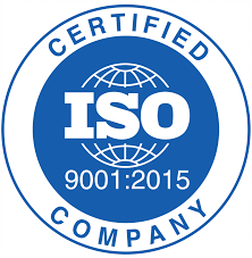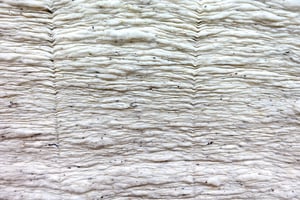
“I have decided on my design, style and look of my product. Now, how do I print the design?”.
This is a really common question we get from new and experienced designers alike. Here’s an insight into what we have found out from speaking and working directly with some ofthe best printers around.
There are three main methods of printing on your fabric, being block printing, screen printing and digital printing. When it comes to these printing methods there is no one that is ‘the best’. Instead it all comes down to the look you are hoping to achieve, the fabric you are using, your budget and your minimum order quantities.
Let’s talk through them in the order in which they were invented. By no means does the newest mean the best, or vice versa.
Block Print
Block printing is the oldest, with traces originating to the fifth century BC and roots in India, Japan and China. It is the most artisanal of the printing techniques - an ancient craft done by hand carving your design into a wooden block. This block is then covered in ink, and hand pressed onto the fabric, which transfers your design. The result is a print, which comes out slightly raised from the fabric and is only as even as the person doing it is able to make it.
The dyes for block printing are usually mixed by hand and eye to match the desired pantone – a job requiring incredible skill and experience. To get consistency of colour, it’s therefore really important to send a fabric swatch reference, which can be used for colour matching. For each colour layer, a new block is needed with the design of that colour layer carved into it. Once printed the fabric then takes a couple of days to dry (which is longer than other printing techniques).
Block printing creates a very striking effect with strong lines, and colours. Normally there is a notable difference in textures between blocks, as often less detail than other printing techniques due to the hand carved nature of the block (blocks can be carved to include intricate detail, however, it’s important to remember this detailed carving will increase the cost of developing your block). This difference between blocks, and small artisanal imperfection creates a beautiful handmade effect called Wabi Sabi.
Screen Print
Now to move onto screen print, this is a method developed in China in 960 AD that transfers your design to the fabric using a mesh screen, and a stencil cut to your design.
The screen is placed over the stencil and ink is forced through using a blade. The dye remains on the fabric where it has not been blocked by the stencil. Again like block printing, one colour is printed at a time so several screens can be used to create a multi colour design.
Again, with screen printing you are matching the dye to your pantone colour in the same way as a block print so its possible to screen print in many unique colours. Screen printing creates a much more consistent and smooth design than block with sharper lines; each design looking the same. If printing large quantities screen printing is more time effective than block, as well as more cost effective. You can also achieve those little imperfections from a block by deliberately creating an imperfection in the stencil.
Digital Print
Digital printing is a method of printing much like using a printer you may have at home, using CMYK inks your design is printed directly onto your fabric. Digital print, much like screen print, is very consistent and normally has very low minimum order quantities as there is no block, or screen development to take place. It is also the fastest method of printing if you are in a rush to get those orders out.
It is often best for very intricate designs that require more clarity, as you can print extremely complex lines clearly. However, as mentioned earlier, digital prints use CMYK dyes which means you won’t be able to pantone match your design colour. Instead, it will have to be CMYK matched meaning less vibrant colours than screen, and block.
As you can see, choosing between block, screen, and digital can be a little bit tricky. So always remember to assess the final look you want, timeframe, MOQ, colours and design when choosing between them. It’s also important to see which one is suitable to your fabric. Block, and screen are suited to all fabrics and digital to most, though some digital machines may not print on synthetics so always make sure to check with your printer.
With the scope of these printing techniques you’re bound to find one you love and that works well for your designs, and can always have a play around with a few different methods to see what works best for you.
















